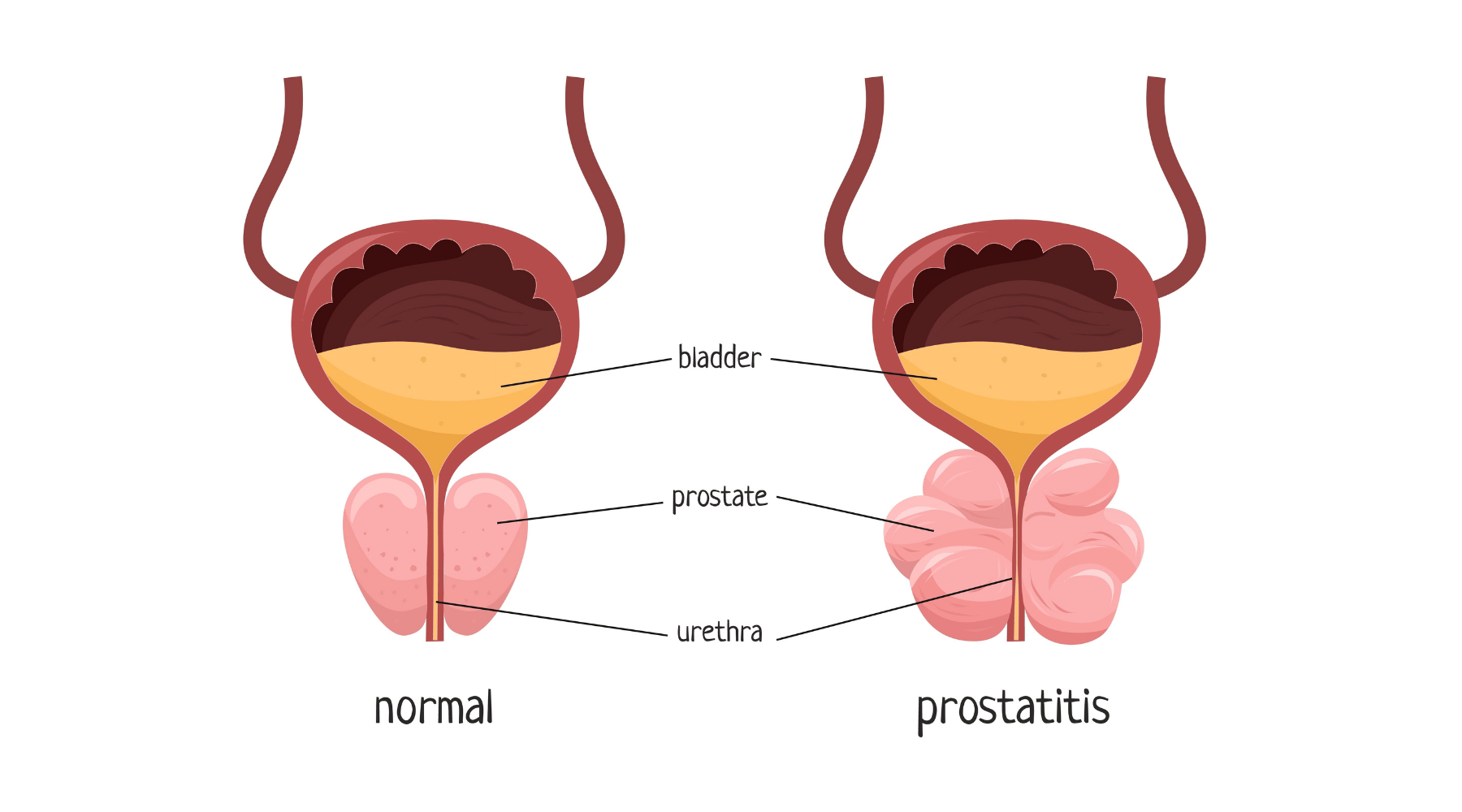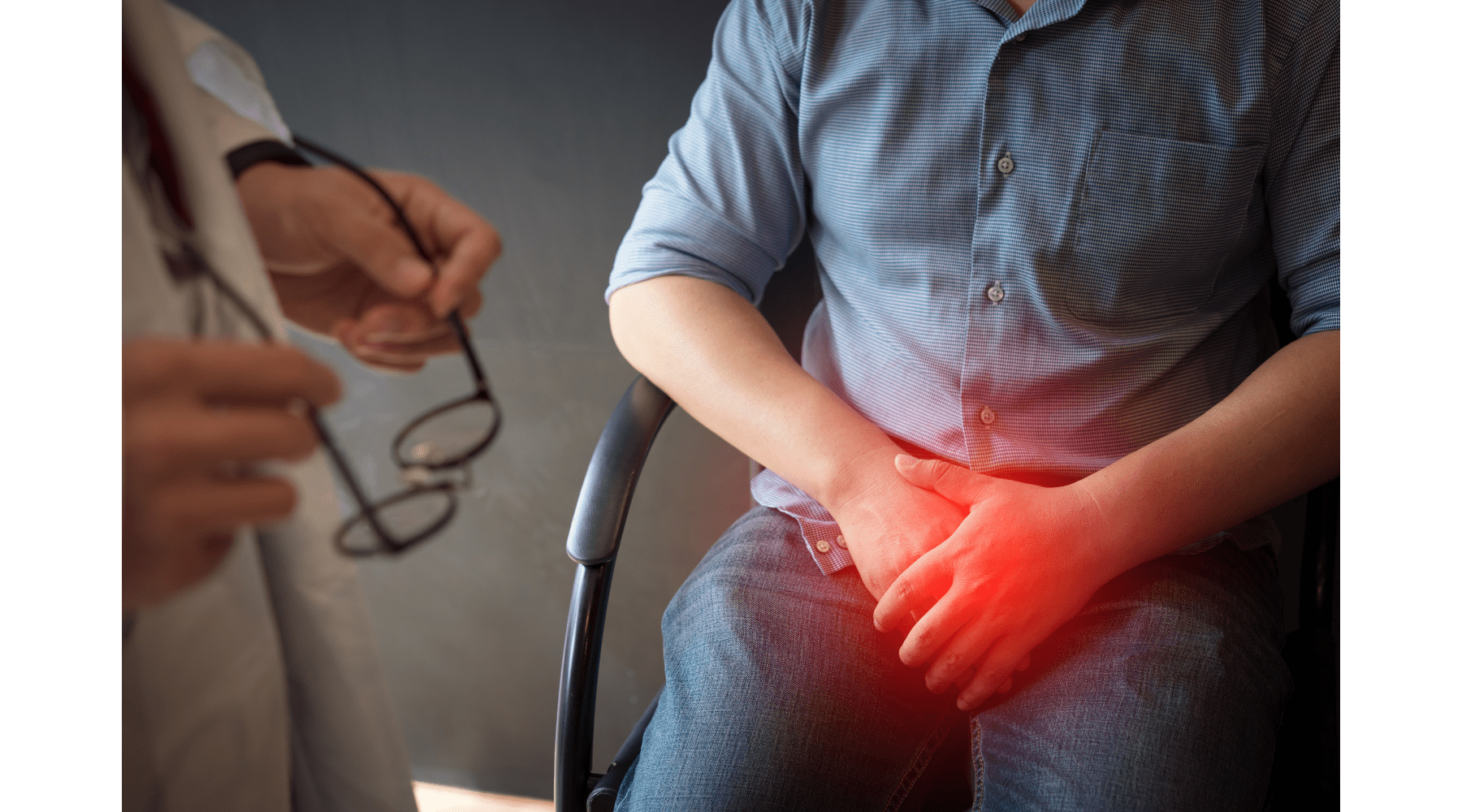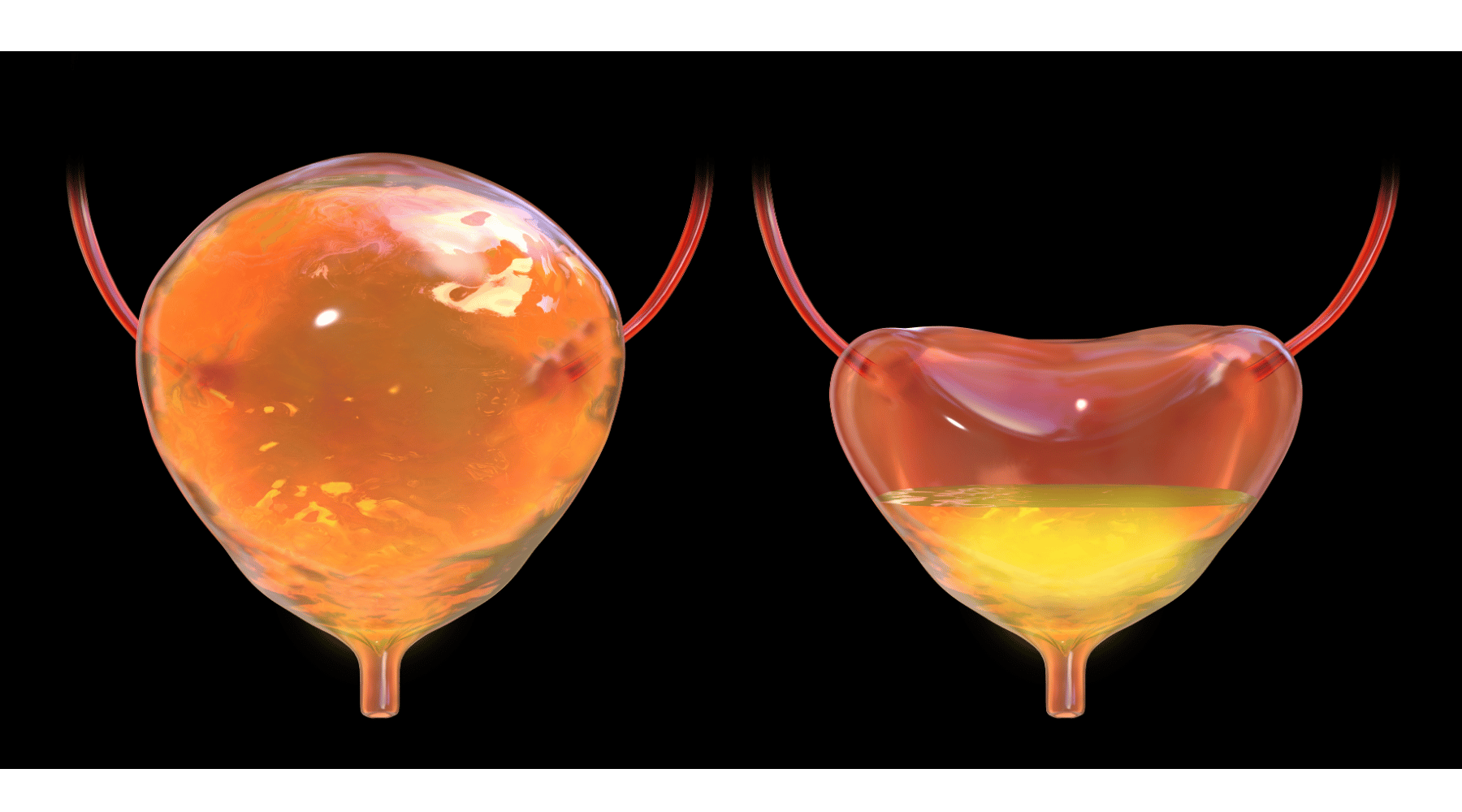
Is Chronic Pain a Sign of Prostatitis? Discover the Symptoms You Shouldn't Ignore
Chronic pain can often feel like a mystery, especially when linked to conditions like prostatitis. Understanding the nuances of this common issue is crucial, as symptoms can include inflammation and discomfort in the pelvic area. While acute prostatitis may be treated with antibiotics to combat bacterial infections, chronic pain often requires a more holistic approach to health. It's essential to recognize the signs and seek appropriate treatment to regain your quality of life. Let's explore how addressing the root causes of prostatitis can help you on your journey toward relief and well-being.
Understanding Chronic Pain and Prostatitis
Chronic pain can often be a silent indicator of underlying issues, making it crucial to recognize its connection to prostatitis. This condition can cause significant pelvic pain and discomfort, impacting daily life. Bacterial prostatitis is often triggered by infections that lead to inflammation of the prostate gland, resulting in persistent pain that may radiate to the lower back or urinary tract. Symptoms to watch for include difficulty urinating, painful urination, and a frequent urge to use the bathroom. Moreover, non-bacterial prostatitis can also contribute to chronic pain without an identifiable infection. Seeking medical help is vital, as antibiotics may be necessary for bacterial cases, while other treatments can alleviate inflammation and discomfort. By understanding these symptoms, men can take proactive steps toward better health, ultimately improving their quality of life. Ignoring these signs could allow an underlying condition to worsen, so awareness becomes an essential part of managing your health effectively.
What is Prostatitis? An Overview of the Condition
Prostatitis is a condition that can significantly impact men’s health, often manifesting through chronic pain that should not be overlooked. It can arise from bacterial infections leading to inflammation of the prostate, which may cause a range of symptoms. These include pelvic pain, discomfort during urination, and even pain during sexual activities. Acute prostatitis generally presents with more severe symptoms and may require immediate medical attention, often treated with antibiotics. Chronic prostatitis, however, can linger and lead to ongoing discomfort, affecting quality of life. Recognizing the connection between these symptoms and prostatitis is crucial for seeking appropriate treatment. If you experience persistent pain or urinary issues, it’s important to consult a healthcare professional for an accurate diagnosis and targeted intervention. Understanding the underlying causes of your symptoms can help you get the right support and improve your overall health. Taking action early can make a significant difference in managing pain and enhancing well-being.
Symptoms of Prostatitis: Recognizing the Signs
Chronic pain can often be a subtle yet telling sign of prostatitis, a condition that warrants attention. The symptoms associated with prostatitis can include persistent pelvic discomfort, painful urination, and urinary urgency. These can stem from inflammation or infection of the prostate, which may be bacterial in nature. Recognizing these signs is crucial, as untreated prostatitis can lead to more severe health complications. While acute prostatitis may present sudden symptoms, chronic prostatitis can manifest gradually, making it easy to overlook. If you experience ongoing pain or discomfort in the pelvic region, it’s important to consult a medical professional for proper diagnosis and treatment options. Antibiotics may be necessary if a bacterial infection is determined to be the underlying cause. Remember, addressing these symptoms early on can greatly improve your quality of life and help you regain control over your health. Don’t hesitate to seek help—your well-being deserves priority.
Chronic Pain in Men: How Prostatitis Plays a Role
Chronic pain in men can often stem from underlying issues such as prostatitis. This condition, characterized by inflammation of the prostate gland, can lead to persistent discomfort in the pelvic area. Symptoms may include acute pain during urination or ejaculation, and a frequent urge to urinate. In many cases, prostatitis is linked to bacterial infections that may require medical intervention, such as antibiotics, to alleviate the inflammation and pain. It’s vital to recognize that chronic prostatitis can significantly impact overall health and quality of life. Ignoring these symptoms could result in prolonged suffering and complications. Men experiencing persistent pelvic pain should consult with a healthcare professional to explore potential causes, receive accurate diagnosis and appropriate treatment options. Taking proactive steps toward management can help mitigate the discomfort associated with prostatitis, supporting a healthier lifestyle. Don't let chronic pain dictate your life—understanding the connection between prostatitis and your symptoms is crucial for finding relief and regaining control over your health.
The Connection Between Prostatitis and Chronic Pain
Chronic pain in men can often be linked to prostatitis, a condition characterized by inflammation of the prostate. This pain may manifest in various ways, including pelvic discomfort and urinary issues, making it vital to recognize the symptoms. Acute prostatitis can arise from bacterial infections, leading to significant health concerns if left untreated. The presence of inflammation not only causes pain but can also affect urinary function, resulting in frequent urges or difficulties when urinating. It is important to seek medical advice if you experience unexplained chronic pain, as this could indicate ongoing prostatitis that requires treatment. Antibiotics may be prescribed for bacterial prostatitis, while other methods can help alleviate symptoms associated with inflammation. By understanding the connection between prostatitis and chronic pain, you empower yourself to address these issues proactively. Prioritizing your health and seeking timely intervention can lead to improved quality of life and help manage chronic discomfort effectively.
When to Seek Medical Attention for Prostatitis Symptoms
Chronic pain can often be a signal that should not be overlooked, especially when linked to prostatitis. This condition, characterized by inflammation of the prostate, can lead to significant discomfort, including pelvic pain and urinary issues. If the pain persists or worsens, it may indicate a bacterial infection requiring antibiotics for relief. Symptoms such as difficulty urinating, painful urination, or lower abdominal pain are common indicators of prostatitis that warrant medical attention. Ignoring these signs could lead to further complications affecting your overall health. Early intervention is crucial; it not only helps alleviate pain but also addresses the underlying cause of the inflammation. Seeking help from a healthcare professional ensures you receive appropriate treatment and support to manage your symptoms effectively. Remember, understanding the relationship between chronic pain and prostatitis can empower you to take charge of your health and pursue a proactive approach to wellness. Embrace the journey toward relief and well-being by prioritizing your health.
Lifestyle Changes to Manage Prostatitis and Chronic Pain
Chronic pain can often signal underlying issues such as prostatitis, an inflammation of the prostate gland that may stem from bacterial infections. Recognizing the symptoms is vital, as they include pelvic pain, painful urination, and discomfort during sexual activity. These signs should not be brushed aside, as they can significantly impact your quality of life. If left untreated, prostatitis can lead to more severe complications and chronic pain. Medical evaluation is essential to determine the cause of your symptoms and guide appropriate treatment. Options may include antibiotics for bacterial infections or therapies aimed at managing inflammation. By addressing these symptoms promptly, you can take charge of your health and seek relief from discomfort. Empowering lifestyle changes—such as staying hydrated, practicing stress management, and maintaining a balanced diet—can also support your overall well-being. Prioritizing your health and seeking help can pave the way for a more comfortable and active life.
Treatment Options for Prostatitis: Finding Relief
Chronic pain can often be a hidden symptom of prostatitis, warranting closer examination. This inflammatory condition of the prostate can lead to significant discomfort, which men may tend to overlook. Symptoms such as pelvic pain, difficulties in urination, or even pain during sexual activity should never be ignored. The causes of prostatitis can range from bacterial infections requiring antibiotics to non-bacterial factors that contribute to ongoing inflammation. Recognizing these symptoms is vital for effective management and treatment. Seeking medical guidance is crucial, as early intervention can help alleviate pain and prevent further complications. Treatment options may include medications to reduce inflammation and pain, lifestyle adjustments, and more targeted therapies depending on the underlying cause. By being proactive about your health and understanding the link between chronic pain and prostatitis, you can take meaningful steps toward relief and improved well-being. Acknowledging these symptoms is the first step in reclaiming comfort and quality of life.
Preventative Measures for Men's Health and Prostatitis
Chronic pain can often be a silent signal that something is amiss, especially when it comes to conditions like prostatitis. This inflammation of the prostate can lead to pelvic discomfort and urinary issues that significantly impact men’s health. Recognizing the symptoms, such as persistent pain during urination or in the lower abdomen, is crucial in determining the underlying cause. Bacterial prostatitis may require medical intervention with antibiotics, while chronic cases could stem from non-bacterial origins, still demanding attention. Ignoring these signs often exacerbates the issue, leading to more severe complications. Effective treatment plays a vital role in alleviating pain and preventing further inflammation. Lifestyle modifications, such as increased hydration and stress management, can also help support overall health and mitigate symptoms. By staying informed and proactive about potential prostatitis symptoms, you empower yourself to seek timely medical advice, ultimately fostering better well-being and quality of life.
10. Conclusion: Taking Charge of Your Health with Awareness
Chronic pain can be a significant indicator of prostatitis, often stemming from inflammation or infection in the prostate. Men experiencing persistent discomfort in the pelvic area should pay close attention, as symptoms might include painful urination or an increased urge to urinate. These signs may not only signal prostatitis but could also indicate a bacterial infection requiring medical intervention. Early diagnosis is crucial; antibiotics may be necessary to address any underlying infection effectively. Ignoring these symptoms can lead to more severe health issues, making it important to seek help. Treatment options vary, including lifestyle adjustments aimed at reducing inflammation and promoting overall health. By understanding the connection between chronic pain and prostatitis, you empower yourself to take proactive steps toward recovery. Awareness of your body’s signals is vital for managing symptoms and enhancing your well-being. Prioritize your health by consulting with a medical professional if you notice any concerning signs related to prostatitis and chronic pain.
People also ask
Can prostatitis cause constant pain?
Prostatitis can indeed lead to constant pain, significantly impacting a person's quality of life. This condition, which involves inflammation of the prostate gland, can manifest in various forms, including acute bacterial, chronic bacterial, and chronic pelvic pain syndrome. In cases of chronic prostatitis, individuals often experience persistent pelvic discomfort that may radiate to other areas, such as the lower back, perineum, and even the genital region. This pain can be dull or sharp, and its intensity may fluctuate throughout the day. The inflammation of the prostate can irritate surrounding tissues, leading to a sense of pressure and discomfort that is often described as a constant ache. Additionally, prostatitis may be accompanied by other symptoms, such as urinary difficulties, painful urination, and sexual dysfunction, which can further contribute to the overall sense of discomfort. The emotional toll of living with chronic pain can also lead to anxiety and depression, creating a cycle that exacerbates the perception of pain. Seeking appropriate medical advice and treatment is essential for managing symptoms effectively and improving overall well-being. Natural remedies, lifestyle adjustments, and medical interventions can help alleviate the pain associated with prostatitis.
Is chronic prostatitis for life?
Chronic prostatitis can be a challenging condition, and its duration varies significantly among individuals. While some men may experience persistent symptoms for an extended period, others may find that their symptoms improve over time with appropriate treatment and lifestyle adjustments. Chronic prostatitis is often categorized into several types, with chronic pelvic pain syndrome (CPPS) being the most common. This condition can stem from various factors, including inflammation, nerve damage, or psychological stress. Treatment options typically include medications, physical therapy, and lifestyle changes aimed at reducing symptoms and improving quality of life. It's essential to approach chronic prostatitis holistically. Adopting a healthier lifestyle, such as regular exercise, a balanced diet rich in anti-inflammatory foods, and practices that reduce stress, can contribute to symptom management. While some men may experience recurring symptoms, many find relief and improved well-being through ongoing care and support. Regular consultations with healthcare providers can help tailor treatment plans to individual needs, making it possible to manage symptoms effectively. Thus, while chronic prostatitis can be persistent, it is not necessarily a lifelong condition, and many individuals can achieve significant relief over time.
Can you get rid of chronic prostatitis?
Chronic prostatitis can be a challenging condition to manage, but there are various approaches that may help alleviate symptoms and improve quality of life. First and foremost, it's essential to consult a healthcare professional for a proper diagnosis and tailored treatment plan. Treatment options often include medications such as anti-inflammatory drugs, antibiotics (if a bacterial infection is present), and alpha-blockers to relax the muscles around the prostate. In addition to medication, lifestyle changes can play a significant role in managing chronic prostatitis. Adopting a diet rich in anti-inflammatory foods, staying hydrated, and incorporating regular exercise can support overall prostate health. Stress management techniques, such as yoga, meditation, or deep breathing exercises, may also help reduce symptoms by promoting relaxation. Alternative therapies, including acupuncture or pelvic floor physical therapy, can be beneficial for some individuals. Furthermore, maintaining open communication with healthcare providers about ongoing symptoms is crucial, as adjustments to treatment plans may be necessary over time. While complete elimination of chronic prostatitis may not always be possible, these combined strategies can significantly improve symptoms and lead to a healthier, more fulfilling life. Embracing a natural lifestyle focused on well-being can empower individuals on their journey toward relief.
Will I ever recover from prostatitis?
Prostatitis, an inflammation of the prostate gland, can be a challenging condition, but many individuals find relief and recovery with the right approach. Recovery often depends on the type of prostatitis diagnosed—acute bacterial, chronic bacterial, chronic pelvic pain syndrome, or asymptomatic inflammatory prostatitis. For acute bacterial prostatitis, prompt treatment with antibiotics usually leads to a full recovery. Chronic bacterial prostatitis can be more complex, requiring a longer course of antibiotics and possibly additional therapies to address persistent symptoms. Chronic pelvic pain syndrome may involve a combination of lifestyle changes, physical therapy, and medications to manage pain and inflammation. In addition to medical treatment, adopting a holistic lifestyle can significantly aid recovery. Incorporating all-natural ingredients into your diet, staying hydrated, and engaging in regular physical activity can promote overall well-being and support prostate health. It’s essential to maintain open communication with your healthcare provider, who can guide you on the best treatment plan for your specific situation. With dedication to both medical advice and healthy lifestyle choices, many individuals experience improvement and regain their quality of life. Embracing a natural approach can lead to brighter tomorrows and renewed confidence in your health journey.


